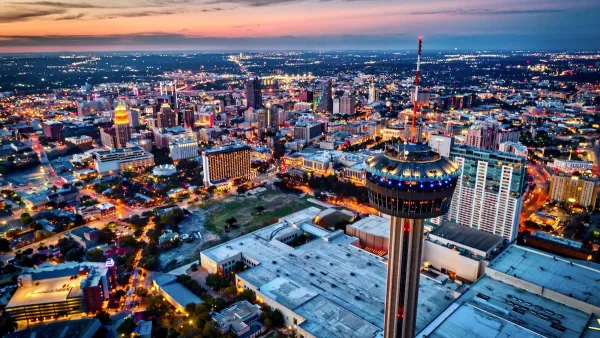Plans to expand the bicycle network in New York City are underway as part of Mayor Michael Bloomberg's long-term plan to make the city more environmentally friendly. But proposals to increase the city's bike lanes are meeting opposition from locals.
"More than ten years ago, the Giuliani administration formally introduced the Bicycle Master Plan for New York City, an initiative to develop a city-wide bicycle network to increase ridership and integrate cycling into the city's transportation system. Since then, the plans have evolved. This spring, cycling has emerged as part of PlaNYC 2030, Mayor Michael Bloomberg's ambitious proposal to make New York City more environmentally friendly and reduce carbon emissions believed to cause global warming. The current plan calls for the completion of an 1,800-mile system of bike routes by 2030, as well as improvements to biking facilities and increasing public awareness. But New York still lags behind many other cities when it comes to promoting bicycling, and a number of questions remain about safety, facilities and the fight for always scarce space in the crowded city."
"The city's move toward a complete bicycle network has not been without debate. A proposed bicycle lane on a car-free block of East 91st Street has drawn opposition from members of the local community who want to preserve the tranquility and safety of the street. The Upper East Side residents of Community Board 8 are also frustrated that city officials did not consult them before deciding on the lanes, according to David Liston, the board's chairman."
"Many New Yorkers cannot take advantage of the city's lanes and paths because they either do not have a bike – it can be hard to store them in tiny apartments-or find it difficult to transport their bikes around the city. To address that issue, some cities around the world have implemented bike sharing. Advocates want New York to follow their lead."
FULL STORY: State of Cycling

Planetizen Federal Action Tracker
A weekly monitor of how Trump’s orders and actions are impacting planners and planning in America.

Chicago’s Ghost Rails
Just beneath the surface of the modern city lie the remnants of its expansive early 20th-century streetcar system.

San Antonio and Austin are Fusing Into one Massive Megaregion
The region spanning the two central Texas cities is growing fast, posing challenges for local infrastructure and water supplies.

Since Zion's Shuttles Went Electric “The Smog is Gone”
Visitors to Zion National Park can enjoy the canyon via the nation’s first fully electric park shuttle system.

Trump Distributing DOT Safety Funds at 1/10 Rate of Biden
Funds for Safe Streets and other transportation safety and equity programs are being held up by administrative reviews and conflicts with the Trump administration’s priorities.

German Cities Subsidize Taxis for Women Amid Wave of Violence
Free or low-cost taxi rides can help women navigate cities more safely, but critics say the programs don't address the root causes of violence against women.
Urban Design for Planners 1: Software Tools
This six-course series explores essential urban design concepts using open source software and equips planners with the tools they need to participate fully in the urban design process.
Planning for Universal Design
Learn the tools for implementing Universal Design in planning regulations.
planning NEXT
Appalachian Highlands Housing Partners
Mpact (founded as Rail~Volution)
City of Camden Redevelopment Agency
City of Astoria
City of Portland
City of Laramie


























